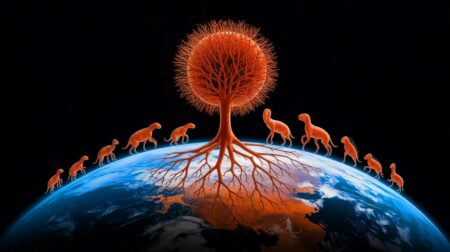The rainforests across the Amazon are among the planet’s last refuges of rich biodiversity, yet they have been losing out to deforestation at an alarming rate. In fact, many of these forests have been degraded far more seriously than assumed with over a third of them affected by human activities, scientists say.
After examining satellite imagery and data outlining changes in the Amazon region between 2001 and 2018, an international team of scientists has found that as many as 38% of the remaining forests have been degraded, amounting to an overall area equivalent to 10 times the size of the United Kingdom.
The affected forests have undergone transient or long-term changes in forest conditions to varying degrees but short of complete deforestation. The four main causes behind forest degradation include forest fires, changes to forests next to deforested areas, selective logging and extreme droughts.
Forest areas are often affected by more than one of these disturbances, worsening their impacts on local biodiversity, the scientists say.
“Despite uncertainty about the total effect of these disturbances, it is clear that their cumulative effect can be as important as deforestation for carbon emissions and biodiversity loss,” stresses Jos Barlow, a professor of conservation science at Lancaster University in the UK who co-authored a paper on the findings.
Beyond the environmental costs, excessive degradation of forests in the Amazon is also harming local communities, the experts say. “Degradation benefits the few, but places important burdens on many,” says Rachel Carmenta, a scientist at the University of East Anglia.
“Few people profit from the degradation processes, yet many lose out across all dimensions of human well-being, including health, nutrition and the place attachments held for the forest landscapes where they live,” Carmenta explains. “Furthermore, many of these burdens are hidden at present. Recognizing them will help enable better governance with social justice at the center.”
Worse still, forest degradation will be driving carbon emissions into the atmosphere, irrespective of whether outright deforestation continues or ceases in the Amazon in coming decades.
“Even in an optimistic scenario, when there is no more deforestation, the effects of climate change will see degradation of the forest continue, leading to further carbon emissions,” says David Lapola, a researcher at the Center for Meteorological and Climatic Research Applied to Agriculture at Brazil’s University of Campinas. “[But] preventing the advance of deforestation remains vital and could also allow more attention to be directed to other drivers of forest degradation,” Lapola stresses.
The scientists say that by monitoring forest degradation, stopping illegal logging and controlling the use of fire in affected areas we can still make a difference to embattled forests across the Amazon. As one solition, they recommend setting up “smart forests” through the use of technologies such as sensors to collect useful data on how to improve the quality of the environment.
“Public and private actions and policies to curb deforestation will not necessarily address degradation as well,” Lapola says. “It is necessary to invest in innovative strategies.”
Did you like it? 4.7/5 (28)








